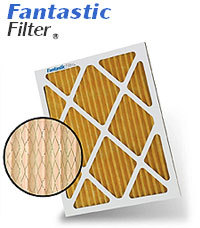Modern man spends a great deal of time indoors – some 90% of our lives in the “shelter” of homes and buildings. Unfortunately, all this time indoors can come at a cost to our health. Tighter building designs geared toward energy and cost savings are trapping pollutants inside the dwellings where we seek respite.
Rather than clean indoor air, we are instead being assaulted by pollution levels two to five times higher than the air outdoors.
Where are all those pollutants coming from?
- Mold
and mildew
High humidity and dampness resulting from condensation, poor ventilation, plumbing and other leaks can aid in the proliferation of mildew and mold, triggering allergy and asthma symptoms, eye, skin, nose, throat, and lung irritation, as well as upper and lower respiratory issues in those exposed. - Biological
contaminants
Biological contaminants in your home include not only mold, mildew, bacteria and viruses, but pollen, dust mites, cockroach feces, and more. Contaminants are carried in via your person or on your pets, and are distributed throughout your home – even through your HVAC ducts. These contaminants are capable of aggravating allergies and asthma and/or causing disease, but can be easily controlled with the use of high quality filters and UV germicidal lamps. - Smoke
Smoke from both cigarettes and combustion burning create gases and particulates that carry a host of chemicals which can result in eye, nose, and throat irritation, respiratory irritation and infections, emphysema, lung cancer, and more. - Asbestos
A natural mineral fiber used in various building components in most homes over 20 years old, including insulation, flooring materials, and more, asbestos exposure can ultimately result in abdominal, chest, and lung cancers and asbestosis. - Radon
Colorless, tasteless, and odorless, radon is created from the naturally occurring breakdown of radioactive materials in earth and rock. Symptoms are not immediately apparent, however radon is linked to an estimated 20,000 lung-cancer deaths annually. - Carbon
monoxide (CO)
Colorless and odorless, CO gas is produced during the incomplete combustion of all carbon-based fuels, including commonly used wood, charcoal, gas, diesel, kerosene, propane, and other natural gases. Often mistaken for the flu, exposure causes headache, drowsiness, dizziness, impairment of respiration, vision, and brain function, and ultimately death. If you fear CO may be an issue in your home, consult an indoor air quality service professional right away. - Formaldehyde
and other VOCs
Off-gassing from pressed wood products, foam insulation, glues and adhesives, carpet and upholstery, household cleaning and deodorizing products, and more can release pungent gases into the air capable of causing allergic reactions, headaches, nausea, dizziness/confusion, eye, nose and throat irritation, coughing. Multitudinous VOCs are linked to brain, liver, and kidney damage, as well as various cancers. - Lead
Lead-based paint, pipes, and fixtures in older homes can contribute to airborne dust particles, causing significant health effects including cognitive and developmental issues in children, brain, nervous system, and kidney damage, anemia, hearing loss, and even death.
To provide efficient energy use, particularly with regard to your home’s heating and cooling equipment, homes are specifically designed to minimize the amount of air that can leak into and out of them. This can result in the need for enhanced ventilation and specialty air filters in your HVAC systems to preserve the air quality in your home. Options include:
- Site-specific exhaust fans, such as in the kitchen and bath.
- Whole house air purifiers with UV lamps.
- Mechanical ventilation, such as exhaust or supply ventilation systems and heat recovery ventilators.






